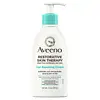What's inside
What's inside
 Key Ingredients
Key Ingredients

 Benefits
Benefits

 Concerns
Concerns

 Ingredients Side-by-side
Ingredients Side-by-side

Water
Skin ConditioningCyclopentasiloxane
EmollientCeresin
Emulsion StabilisingGlycerin
HumectantDimethicone
EmollientPEG-10 Dimethicone
Skin ConditioningPropanediol
SolventVolcanic Sand
Skin ConditioningSolanum Lycopersicum Leaf Cell Culture Extract
Skin ConditioningDaphne Odora Callus Extract
Skin ProtectingOpuntia Ficus-Indica Callus Culture Extract
AntioxidantOpuntia Ficus-Indica Stem Extract
Skin ConditioningEthylhexylglycerin
Skin ConditioningC12-15 Alkyl Benzoate
AntimicrobialBenzyl Benzoate
AntimicrobialSilica
AbrasiveSorbitan Olivate
EmulsifyingPanthenol
Skin ConditioningDistearyldimonium Chloride
Disteardimonium Hectorite
StabilisingSodium Chloride
MaskingCaprylyl Glycol
EmollientCetyl Alcohol
EmollientParfum
MaskingCitral
PerfumingLinalool
PerfumingLimonene
PerfumingDisodium EDTA
Phenoxyethanol
PreservativeWater, Cyclopentasiloxane, Ceresin, Glycerin, Dimethicone, PEG-10 Dimethicone, Propanediol, Volcanic Sand, Solanum Lycopersicum Leaf Cell Culture Extract, Daphne Odora Callus Extract, Opuntia Ficus-Indica Callus Culture Extract, Opuntia Ficus-Indica Stem Extract, Ethylhexylglycerin, C12-15 Alkyl Benzoate, Benzyl Benzoate, Silica, Sorbitan Olivate, Panthenol, Distearyldimonium Chloride, Disteardimonium Hectorite, Sodium Chloride, Caprylyl Glycol, Cetyl Alcohol, Parfum, Citral, Linalool, Limonene, Disodium EDTA, Phenoxyethanol
Ingredients Explained
These ingredients are found in both products.
Ingredients higher up in an ingredient list are typically present in a larger amount.
Cetyl Alcohol is a fatty alcohol. Fatty Alcohols are most often used as an emollient or to thicken a product.
Its main roles are:
Though it has "alcohol" in the name, it is not related to denatured alcohol or ethyl alcohol.
The FDA allows products labeled "alcohol-free" to have fatty alcohols.
Learn more about Cetyl AlcoholDimethicone is a type of synthetic silicone created from natural materials such as quartz.
What it does:
Dimethicone comes in different viscosities:
Depending on the viscosity, dimethicone has different properties.
Ingredients lists don't always show which type is used, so we recommend reaching out to the brand if you have questions about the viscosity.
This ingredient is unlikely to cause irritation because it does not get absorbed into skin. However, people with silicone allergies should be careful about using this ingredient.
Note: Dimethicone may contribute to pilling. This is because it is not oil or water soluble, so pilling may occur when layered with products. When mixed with heavy oils in a formula, the outcome is also quite greasy.
Learn more about DimethiconeWe don't have a description for Distearyldimonium Chloride yet.
Glycerin is already naturally found in your skin. It helps moisturize and protect your skin.
A study from 2016 found glycerin to be more effective as a humectant than AHAs and hyaluronic acid.
As a humectant, it helps the skin stay hydrated by pulling moisture to your skin. The low molecular weight of glycerin allows it to pull moisture into the deeper layers of your skin.
Hydrated skin improves your skin barrier; Your skin barrier helps protect against irritants and bacteria.
Glycerin has also been found to have antimicrobial and antiviral properties. Due to these properties, glycerin is often used in wound and burn treatments.
In cosmetics, glycerin is usually derived from plants such as soybean or palm. However, it can also be sourced from animals, such as tallow or animal fat.
This ingredient is organic, colorless, odorless, and non-toxic.
Glycerin is the name for this ingredient in American English. British English uses Glycerol/Glycerine.
Learn more about GlycerinPanthenol is a common ingredient that helps hydrate and soothe the skin. It is found naturally in our skin and hair.
There are two forms of panthenol: D and L.
D-panthenol is also known as dexpanthenol. Most cosmetics use dexpanthenol or a mixture of D and L-panthenol.
Panthenol is famous due to its ability to go deeper into the skin's layers. Using this ingredient has numerous pros (and no cons):
Like hyaluronic acid, panthenol is a humectant. Humectants are able to bind and hold large amounts of water to keep skin hydrated.
This ingredient works well for wound healing. It works by increasing tissue in the wound and helps close open wounds.
Once oxidized, panthenol converts to pantothenic acid. Panthothenic acid is found in all living cells.
This ingredient is also referred to as pro-vitamin B5.
Learn more about PanthenolChances are, you eat sodium chloride every day. Sodium Chloride is also known as table salt.
This ingredient has many purposes in skincare: thickener, emulsifier, and exfoliator.
You'll most likely find this ingredient in cleansers where it is used to create a gel-like texture. As an emulsifier, it also prevents ingredients from separating.
There is much debate on whether this ingredient is comedogenic. The short answer - comedogenic ratings don't tell the whole story. Learn more about comegodenic ratings here.
The concensus about this ingredient causing acne seems to be divided. Research is needed to understand if this ingredient does cause acne.
Scrubs may use salt as the primary exfoliating ingredient.
Learn more about Sodium ChlorideWater. It's the most common cosmetic ingredient of all. You'll usually see it at the top of ingredient lists, meaning that it makes up the largest part of the product.
So why is it so popular? Water most often acts as a solvent - this means that it helps dissolve other ingredients into the formulation.
You'll also recognize water as that liquid we all need to stay alive. If you see this, drink a glass of water. Stay hydrated!
Learn more about Water